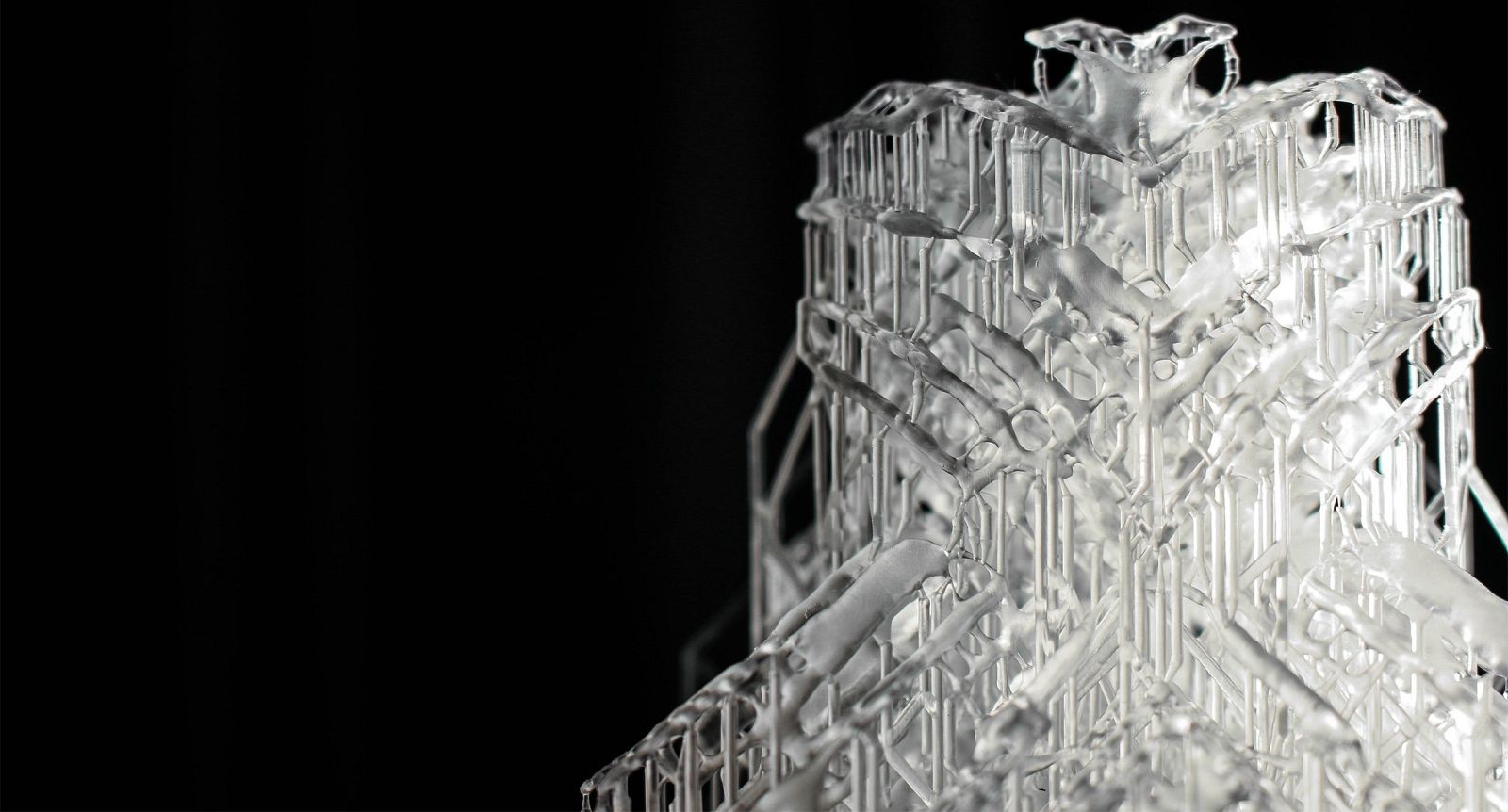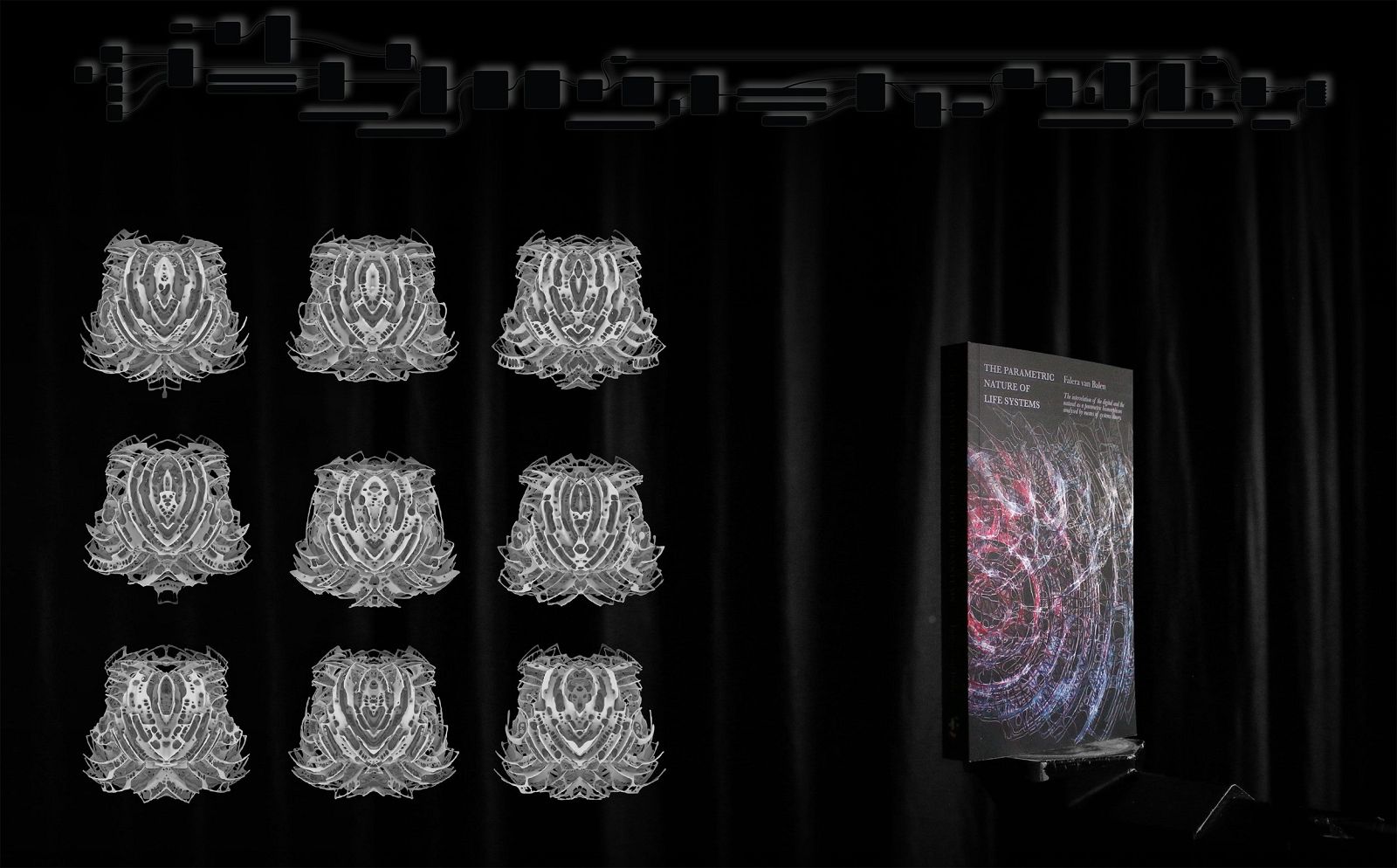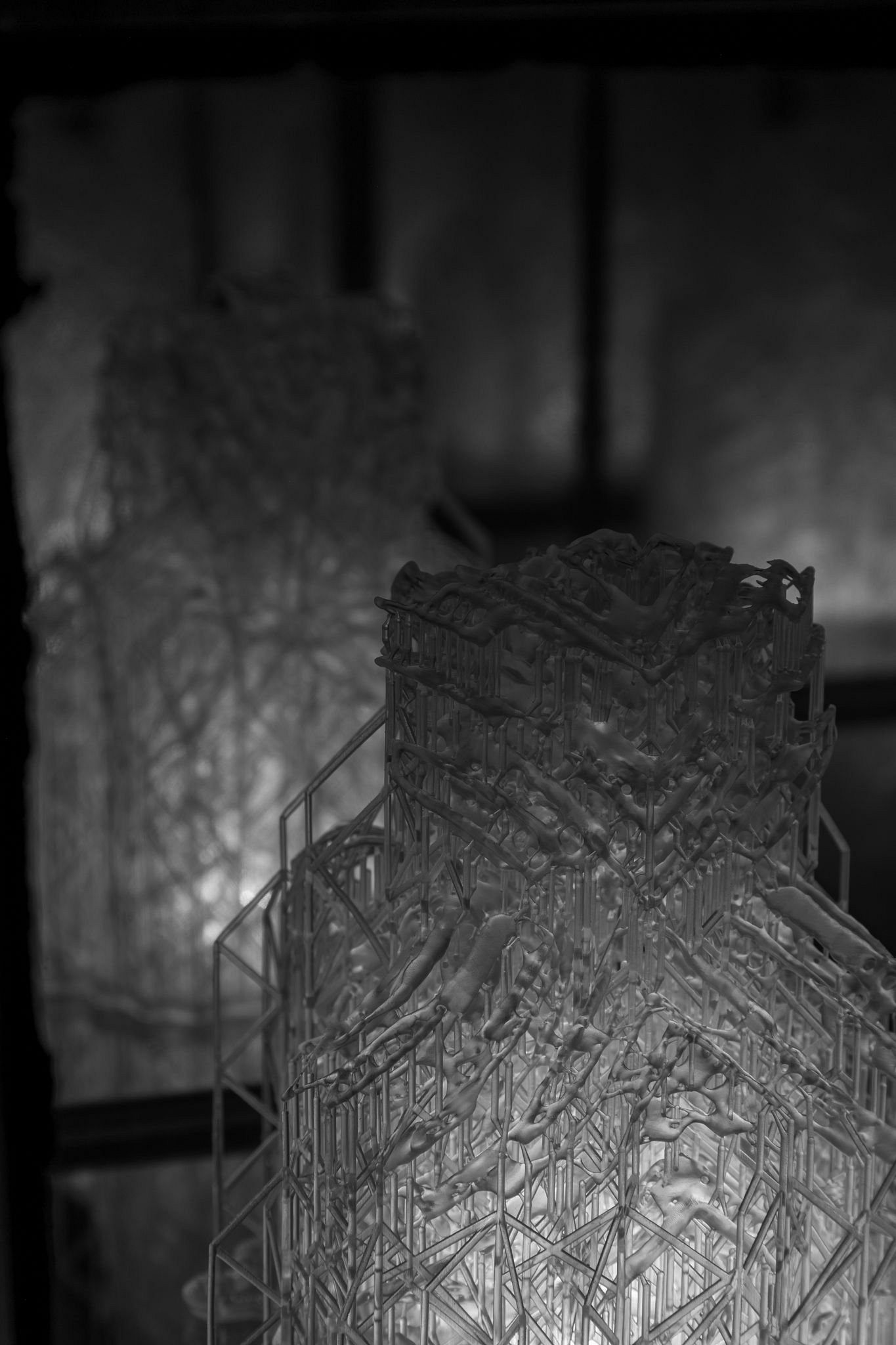
Falera van Balen
Keywords: Parametricism, Systems theory, Architecture
Internship: Cara Cara Collective, Helsinki, Finland
Read Thesis
This work explores the juxtaposition between digital systems and the organisation of life systems by observing their respective underlying processes from the perspective of architectural form finding.
At its heart it seeks to understand how parametric design, an algorithmic approach to form generation, reflects the behaviour of life systems, both structurally and aesthetically. Rather than treating the natural and the digital as separate domains, I argue that they are interwoven through shared patterns, logics, functionings and forms.
Sharing characteristics like emergent behaviour, fractals, the fingerprint concept, topology optimisation, Voronoi structures, the Fibonacci sequence and asymmetrical symmetry. Making a case for the inherent similarities between carbon-based and silicone-based communication. Just like in the natural world, architecture has long embraced iteration, seen clearly in the digital logic of Gothic design, which echoes the generative cycles of parametric algorithms.
Life systems arrive at highly effective forms and structures through simple rules generating complex outcomes. Digital processes, based on binary code, such as scripts in Rhino’s Grasshopper, by means of connecting components with simple tasks, simulate intricate forms similar to those found in the natural world. I call this phenomenon ‘circular technology’, illustrating the idea that as we push technological boundaries, we circle back to nature’s own logic. Simulating processes in digital algorithms that had, at some point in time, already taken shape in natural systems.
From this perspective parametric algorithms become more than a design tool; they become a philosophy that mirrors biological evolution.
Photography credits: Mateusz Sejfryd & Michał Betta
EXHIBITING IN PB.102 (First floor Prinsessegracht Building)


